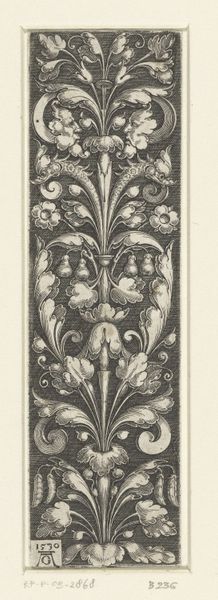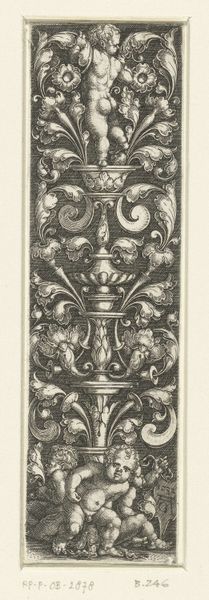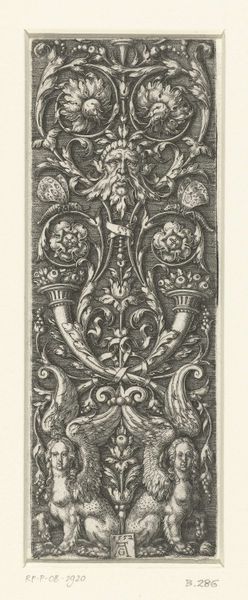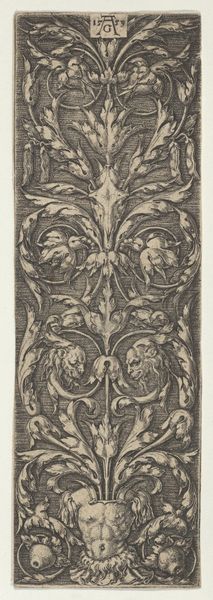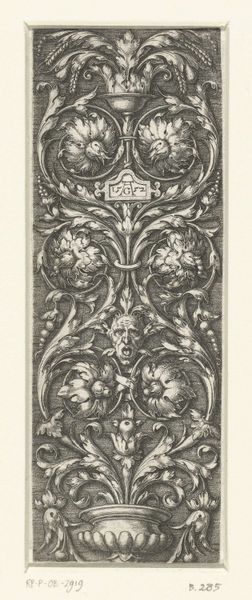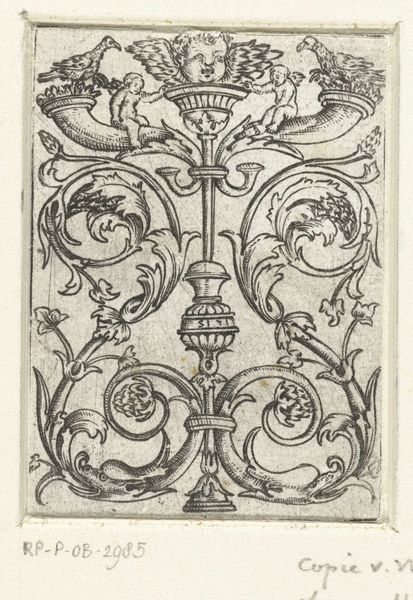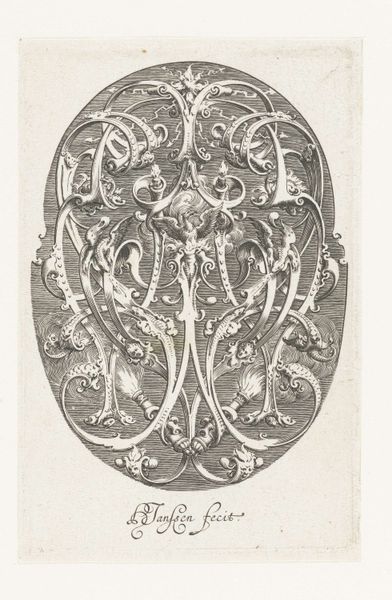
#
pen drawing
#
mechanical pen drawing
#
pen illustration
#
pen sketch
#
old engraving style
#
junji ito style
#
personal sketchbook
#
pen-ink sketch
#
pen work
#
sketchbook drawing
Dimensions: height 72 mm, width 48 mm
Copyright: Rijks Museum: Open Domain
Editor: So, here we have Albrecht Altdorfer's "Zondeval," a pen drawing from around 1532. I'm immediately struck by the meticulous detail and how the whole design feels...contained, almost rigid. What's your take on this piece? Curator: It's crucial to consider the sociopolitical context here. The Reformation was underway, drastically shifting perspectives on established authority. Note how the idealized forms push against the boundaries. The image acts as a kind of ornamentation and reflects the social unrest experienced through religious reform and questions the aesthetic expectations prevalent at the time. How do you see this challenging societal norms? Editor: I hadn't thought of it that way! It almost feels contradictory – ornate yet restrained, potentially subversive within strict confines. I was stuck on the tight composition, not realizing how it relates to wider events. Curator: Exactly. Consider that such ornamental art pieces become symbols of defiance in a restrictive and hierarchical society by those in positions of leadership. They begin a conversation of privilege during periods of potential reform. How might Altdorfer’s status have played a role in his piece? Editor: Interesting… so maybe the piece subtly interrogates who has the ‘right’ to create and enjoy this style of ornamentation, prompting conversations about economic power and artistry at the time. Curator: Precisely! By observing historical roots of art like “Zondeval,” the piece’s social relevance will only further deepen over time as more communities gain a critical understanding. Editor: Wow, I came in thinking this was just a pretty drawing, but now I see how it opens up broader discussions of reformation and artistry. Thanks, that was really helpful! Curator: My pleasure. Art like this allows us to challenge assumptions about the relationship between form and power, and question our assumptions on access to information.
Comments
No comments
Be the first to comment and join the conversation on the ultimate creative platform.
